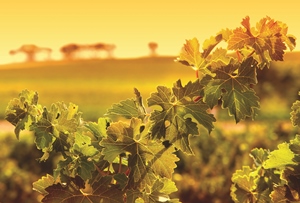For the likes of Harrison et al, the wines of Chile, New Zealand and Italy have, to some extent, stolen Australia’s clothes by appealing to mainstream consumers with Sauvignon Blanc, Pinot Grigio and Prosecco.
It is all about easy-to-understand grape varieties, fruity (sweet), easy-to-drink wines led, in the main, by familiar brands. These values have been fundamental to Australia’s success – and still are.
Meanwhile at the premium end, the wines of Bordeaux, Burgundy, the Rhône, Chianti and Rioja hold sway, while in the mainstream there are the likes of Mendoza Malbec from Argentina, Marlborough Sauvignon Blanc from New Zealand and Cabernet from Chile.
So what has happened to Barossa Valley Shiraz and Coonawarra Cabernet?
On the one hand, brands such as Accolade’s Hardys continue to lead the market as it executes its Australian and English Cricket team sponsorships. But on the other hand, own-label wines in the UK have added to a big jump in performance and currently account for 63% of the total UK wine market. The average price point for Australia has moved backwards from £5.26 in 2014 to £5.20 in 2015.
The challengers have also managed to get more for their wines while Australian wine lovers in the UK are getting older and appear willing to pay more for their favourites.
POSITIVE NOTE
On a more positive note, Jancis Robinson MW in her Financial Times column recently said she commended top Australian Chardonnays to a Burgundian winemaker as an alternative to white burgundy. Apparently he was shocked.
She says: “Such progress towards finesse has been made by Australia’s best Chardonnay practitioners recently that I am now looking for serious alternatives to fine white burgundy in the cooler reaches of Australia.
“If you are familiar with the finest Meursaults, Montrachets and Chablis, you may think I have taken leave of my senses.
“But as a wild generalisation, at the moment I am finding more life, interest and certainly value in the best of the new generation of Australian Chardonnays than I am in the great bulk of white burgundies, which tend to cost at least as much.”
Robinson concludes: “All in all, Australian wine is unrecognisable compared with how it was a decade ago. I do hope some of those exciting new Chardonnays make it to the home of Chardonnay, Puligny-Montrachet.”
Accolade Wines’ Robert Harrison, sums up: “To increase the opportunity for consumers to trade up, we need to ensure we have the right portfolio available.
“We should all be focused on filling this gap, by extending our premium Australian portfolios of single varietal, regional wines, to drive consumers to trade up. Our William Hardy range has had good success and includes a Shiraz from Langhorne Creek, and Chardonnay from Limestone Coast.”
Wine Australia’s Clark concludes: “We believe Australia has been overlooked and is under rated. We need a sharper focus on premium wines.”
Accolade’s Robertson, in pointing out how far Australia has come, showed a comedy sketch from the 1970s extolling Aussie wines as something to get drunk by and not much else.
The last thing Australian winemakers want is to go back to ‘Château Chunder’.




